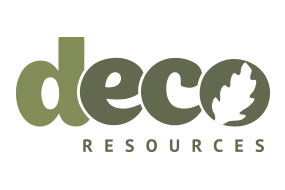Southside residents and nature lovers across the Pittsburgh region are eagerly awaiting their newest neighbors: Baby Bald Eagles are expected to hatch any day now. Although the Audubon Society says that it’s been “more than 250 years since Bald Eagles last nested along Pittsburgh’s three rivers,” we now have multiple pairs of our national bird raising their young on the banks of our three rivers. The map below illustrates locations of each pair nesting along each of our rivers.
The amazing thing about having these incredible birds residing in our region after a 250-year hiatus is that it illustrates how far we have come in restoring the Pennsylvania Wilds. Many of the trees along the river were, at one time, cut down. The air was filled with acrid smoke and the water was fouled with pollution. The eagle can be seen as an indicator that we are making great strides in restoring the natural habitat, but it does not mean that we have solved the problem.
As World Water Day was last week, this is a good time to reflect on our region’s impact on the water cycle. You might already know that Alcosan, (Allegheny County Sanitation Authority) is in violation of the Clean Water Act under the EPA (Environmental Protection Agency) for allowing raw sewage to flow directly into our rivers during storms with high rainfall. The city is working on a plan to fix this problem, but its going to take several years and billions of dollars to implement.
It takes energy to move water and it takes water to create energy.
There is no shortage of professionals working to find new solutions to improve our local water. Just yesterday, DECO Resources was well represented at The Water-Energy Nexus, a conference held by Sustainable Pittsburgh and EWRI at Phipps Conservatory. A number of local leaders, including Mayor Peduto, came together to discuss various problems and solutions regarding water and energy. It takes energy to move water and it takes water to create energy. The Pittsburgh business, non-profit, and education-based communities will have to develop better ways of managing our water to improve our impact on the natural environment.
The Schwartzenator
I am not a vegan nor have I ever been one. With my love for all things meat and potatoes, I have never even flirted with the idea of becoming a vegetarian. I do, however, enjoy good food and occasionally that food does not contain any animal byproducts. This is the case with Jonathan’s foods in the Southside-based Schwartz Market. Schwartz Market, located at 1317 East Carson St. contains a variety of local vendors such as Jonathan’s Foods, the Enchanted Garden Juices & Smoothies, and more operating out of an old-world market house.
Jonathan of Jonathan’s Foods is unique not only because he makes meals without animal byproducts, but for the way he re-imagines traditional recipes with vegan ingredients. He brings unconventional flavors together into filling and exciting meals like the Schwartzenator: A wrap filled with Clarion River Organics Sauerkraut and the Sweet & Spicy Pepper jam, grilled with fresh organic vegetables and topped with crispy spinach.

To follow up the Schwartzenator, Jonathan has created a raw, vegan strawberry “cheesecake” made with organic cashews, dates, and strawberries. It’s also gluten free! Jonathan calls it the “vegan cheesecake” but I call it the strawberry cheeselesscake special.
Besides being tasty and nutritious, many people claim that being vegan is better for the environment. What evidence supports this? According to the San Francisco Public Utilities Commission, a typical serving of lettuce uses three gallons of water to produce, two slices of bread takes approximately 20 gallons to produce, compared with 330 gallons of water for a serving of chicken and 1,200 gallons for a serving of beef. This is just looking at water consumption. Other considerations are space requirements, pollution caused from waste byproducts, and energy required for housing and transport.
You might not regularly think about how much water went into producing the food you eat, but it certainly has a big impact on the environment. Although the Pittsburgh region is fortunate to have three rivers and abundant rainfall, it is imperative to keep it clean and usable. To put things into perspective, the Great Lakes Basin is said to contain one-fifth of all available fresh water on earth and 95% of the water supply for North America. This means that a lot of other people are less fortunate. How we use our water in this region has national and global ramifications.
Sustainable Strategy
What is your strategy to improve your environmental impact? We’d like to hear about it. Connect with us on Facebook or Twitter to share your story. As our netgreen community continues to grow, we hope to gain better insight on how local businesses can have a positive impact on their environment and community while remaining profitable. Our mission at DECO is to create healthy businesses and communities in a healthy environment. We want to work with you to create a strategy to become more sustainable.



Always exciting to see changes and updates here! Good job!!! Keep up the great work!